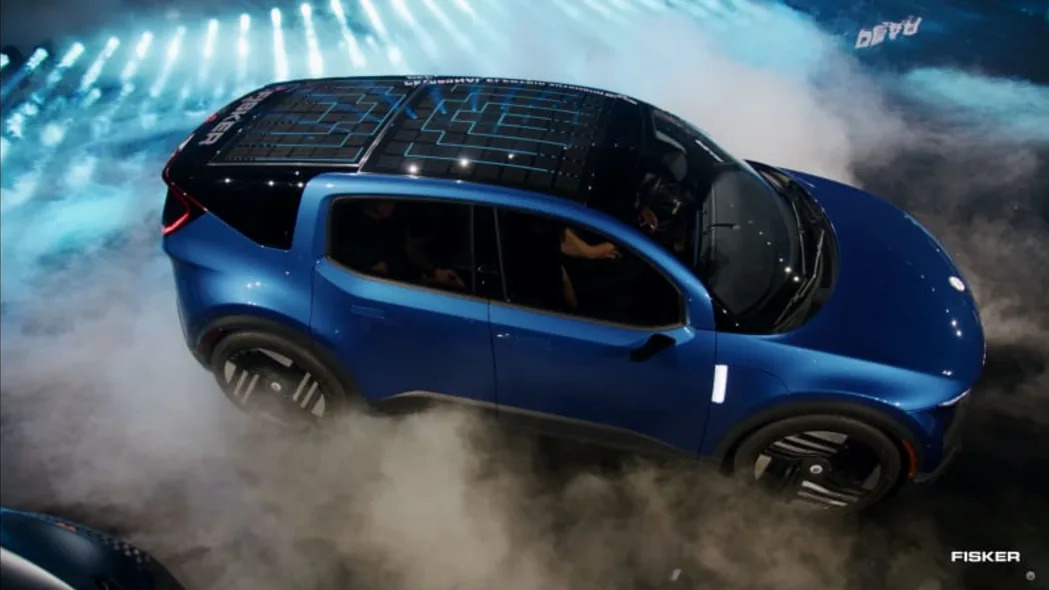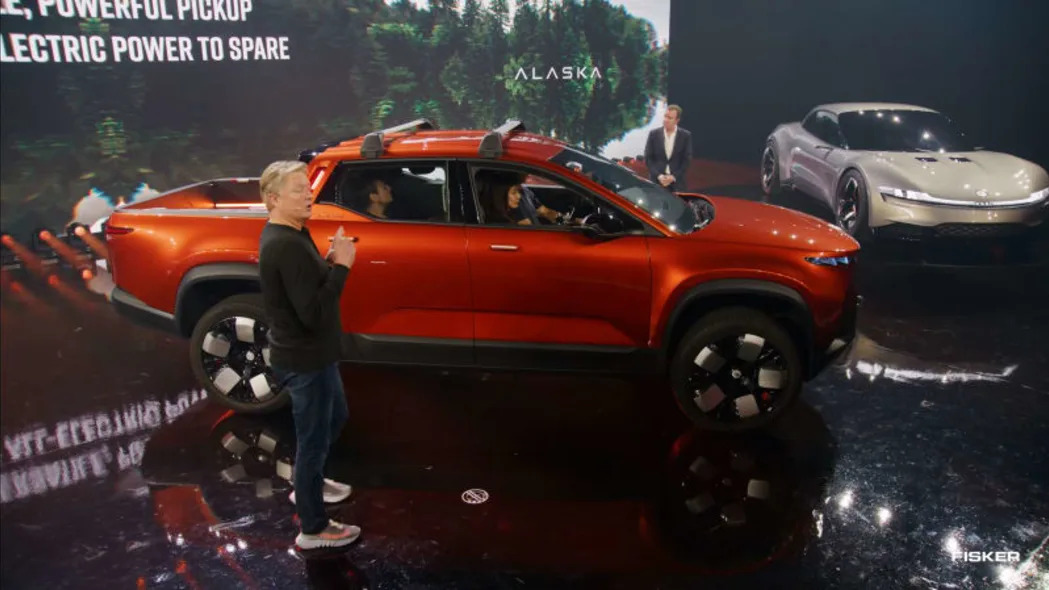With the Fisker Ocean reaching customers and a so-far successful first wave of media drives, company CEO Henrik Fisker took the stage in Huntington Beach, California last night to go over the products that are part of Fisker, Inc's second chapter. These are the Pear city car, which Fisker expects to be the company's best-seller; the Ronin four-door convertible flagship, produced in limited numbers; the Alaska pickup, built on an extended version of the Ocean's platform; and the Force E off-road package for the Ocean, available as a factory option or a dealer-installed kit after purchase. The CTO was also there to discuss the new Blade processing platform that will make all of the company's in-car tech dreams come true and debut with the Pear.
We'll start with the Pear. It's built on a new SLV1 platform, an acronym Fisker said stood for "simple, versatile, and volume." We're not sure what the L is for, perhaps light, based on the claim the Pear uses 35% fewer parts than an equivalent city car. Engineers achieved this with measures like producing a single symmetrical armrest piece that fits all four doors.

Parked on stage next to an Ocean, the Pear is clearly smaller, but it doesn't look at all small. We'll need to see it in the open with other objects for reference to understand the sizing. There were neat design elements like the giant windshield, the concave hatch glass attached at the top to the spoiler, a flash glass panel arcing over the roof at the rear three-quarter, and a taillight that formed an oval around the backlight. The hero car also had a roof full of solar panels.
The way the CEO talked about Pear features, the target audience of urban dwellers moves in packs that need places to store lots of stuff and maybe sleep. "Everything in the dash is about storage," he said, revealing an instrument panel with a central screen surrounded by recesses, some of the recesses topped by rubber straps that secure goods. He didn't demonstrate the front trunk, which he called the front boot in UK English, then shortened to "froot." He did demonstrate the Houdini trunk. When an owner wants to load the rear bay, the hatch glass disappears into the lower metal portion of the hatch, then that lower potion slides down into the bumper. A neat piece that doesn't need room in a tight parking spot, takes a lot longer than opening a hatch, though. We were told the Pear's two rows of modular seats can seat six in the car's most expansive interior configuration and be turned into a lounge/sleeping space, and a dedicated five-seat version can do the same.
The Pear is due on the market in mid-2025 at a price of $29,900 before incentives. Deposits are open now, worded as, "$250 for first reservation, $100 fully refundable for second." The semantics lead us to believe the initial $250 isn't refundable.

Stepping up in price is the Alaska pickup, a tidy truck with a mid-gate like the Silverado EV that Fisker also called the Houdini trunk. The Ocean's platform is called FM29. The Alaska's stretched version of that platform is called FT31. Again, though, we're not sure of dimensions yet, only that it's "somewhere between a compact and a midsize."
The CEO has said he sees this as "if Ferrari did a pickup," so excellent handling and being "a great driver's car" are prime parts of the equation. Hauling convenience is equally important. The way it was described, the standard bed stands about 4.5 feet long. Lowering the mid-gate extends the bed to about 7.5 feet. Lowering what looked like a rather tall tailgate extends the bed to about 9.6 feet in length.
Cabin features include "the world's largest cupholder" because compact pickup buyers apparent drinking straight from gallon jugs, plus cowboy themed touches like reclaimed wood that feels like fabric and a cowboy hat holder above the back seat.
The Alaska is due at the end of 2025 with a projected range of between 230 and 340 miles, starting at $45,400 before incentives. Deposits are open, with the same pricing structure as the Pear.

On a similar note of rugged use, the Force E package for the Ocean is expected to be available in Q1 2024. This fits a stouter roof rack and roof basket, new front and rear bumpers, tow hooks at both ends, underbody skid plates, new dampers, and 33-inch tires on 20-inch wheels, plus optional grab handles, tiedowns, and rubber floors. Pricing will be announced closer to release.

Finally, taking the flagship spot comes the Ronin, which is "really about redefining the supercar." The spec sheet will list three motors and more than 1,000 horsepower, zero to 60 mph in two seconds, four butterfly doors, five seats, and a retracting hardtop in carbon fiber. We weren't shown the inside of this one nor given details on the battery, but Fisker is targeting at least 600 miles of range on a charge. That's about all we know of it beyond the shape. Due at the end of 2025, there will undoubtedly be much more to share about this one, Fisker saying it's going to be the company's technology showcase and deliver new definitions of luxury.
Said to be "ultra-luxury priced and built in limited quantities," the Ronin starts at $385,000. You read that right. Reservations are open as well, "$2,000 for first reservation, $1,000 fully refundable for second."



Sign in to post
Please sign in to leave a comment.
Continue